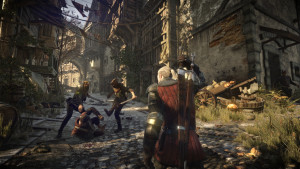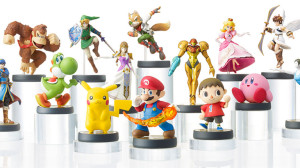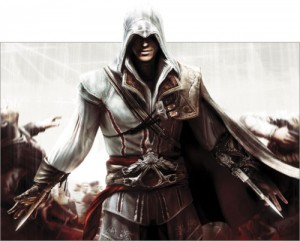The allergies have finally subsided in Mel-land, readers, in case the thought was on your mind this Friday afternoon. It was not? Oh, games. Right, that was the purpose of this column. Very well, it just so happens I have a few words on the subject this week. With E3 right around the bend, talk of hype is more quickly than ever quashed by cynical reminders of modern games coming saddled with more problems and disappointments, bait and switch tactics, and all around dirty business practices than ever before. Maybe not all of gaming is thus, but AAA gaming certainly has garnered that reputation fairly and E3 is largely a showcase only for the AAA space. Given that, and given the even-handedness I like to at least pretend I maintain in my articles, I want to take a look at an angle of gaming today that attracts a good deal of criticism. Post-launch support is, perhaps, at the center of most bones of contention surrounding new game releases. What do they do wrong what do they do right? Well, that is what I am here to discuss!
Skipping the history lesson on how post-launch support has progressed throughout the industry’s hardware generations, I would like to focus on the ways developers handle this today. Starting from the bottom and working my way up to the top, let us tackle on-disc DLC. This was more prevalent, or at least more obvious, in the early years of last gen when companies like Capcom would lock away content on disc that would be featured as “downloadable” later on. What customers were really downloading was an activation key to get to the content already fully on the disc that they purchased. We still see evidence of this going on today, albeit in more creative ways. Nintendo’s amiibo are in fact the latest and most creative of this kind of post-launch game support. And the results of it are perhaps a bit beyond the scope of this article, save for the fact that it is not exactly ideal for the common customer. Given the laughable scarcity of the amiibo figurines thanks to things like rabid collectors and the genuine appeal of these officially branded Nintendo products, the only saving grace for this debacle is that amiibo functionality is quite limited. The idea, however, is stymied by these problems and until Nintendo rolls out those amiibo card alternatives, any kind of real use of amiibos in games will be wasted on most of the buying public as people simply line their shelves with the little toys, some never leaving the packaging. But this is not the amiibo complaint-hour. This is just to point out a rather creative way that on-disc DLC (the term is stretched quite far at this point) has been met with disaster yet again.
The intent of this post-launch support is not a mystery, of course. It is to keep people from trading in their games, it is to add another revenue source for a single SKU that would otherwise only see one week’s worth of meaningful profit. And the idea of extending the benefits of a single game’s release by adding more content to a game sounds great on paper, but as can be witnessed by the above it can run into some pitfalls not just a few of which are generated by greed. Pre-order DLC is a close cousin of on-disc DLC, only much more common these days and in many ways much more insidious. I might roll my eyes at on-disc DLC, but I add a furrowed brow whenever pre-order DLC enters the equation. Usually tied to a specific retailer, pre-order DLC tries to marry a bunch of sweetness for the publisher into one ugly idea. It not only limits what the consumer can get with their game purchase based on which retailer they pre-order from, which may not even be a choice for some people, but it holds that content hostage to a pre-order. I realize pre-orders are not entirely bad, but with the state of game design and hype machines, especially surrounding the sort of games that offer pre-order DLC in the first place, throwing caution to the wind at Ubisoft’s or Activision’s or EA’s promises seems unwise. More and more, a pre-order only guarantees access to the least stable and least enjoyable version of a game, before the patches that resolve all the things the game’s bloated development cycle could not do on its own. And when combined with version-specific DLC that changes with Limited, Ultimate, or whatever-else versions of the game, when charts have to be made to make sense of what content is on which version at which retailer… The hoops that need jumping through actually eclipse the value of the little cosmetic items being handed out from the bonuses in the first place.
But should a developer have the means and the interest to keep their paying customers happy and coming back for more, years down the road, there are a few ways to have your DLC cake and eat it too. CD Projekt RED’s latest release The Witcher 3: Wild Hunt, a game I would review if not for how long and worthy of savoring it is, has been showing the AAA industry up in more than a few ways. It is a truly massive open world game with few critical glitches at launch, none of which I happened to experience. It is a game that offers compelling diversions from the main questline, not just fetch quests. And it offers a throw back for its post-launch support by giving free content out, added quest lines and cosmetic items, not very long after launch. The patches for the game have also come quickly to address those problems that did exist, with the fifth such patch in two weeks that not only squashes bugs but retools some gameplay mechanics that were brought up by many users. Conversely, Bethesda was notoriously sluggish to get the PS3 version of Skyrim in a reasonably playable state and even worse could be said about the state of Fallout: New Vegas on all platforms. There is a way to do things right and, despite the great undertaking that producing and releasing a game like Wild Hunt surely is, CD Projekt is deservedly getting a lot of love for its dedication to finding the right way. Maybe it is because of their smaller structure, not being under the cold and impersonal command of a monolith like Ubisoft, but this team has managed to put something out of on a massive scale and keep it reigned in rather well. For now this is my go-to example of a company and a product that does AAA as well as it can be done and still be profitable.
I only touched on a couple ways games are supported after launch (DLC and patches), and even then I only brought up a few examples. If you have any other examples you would like to mention, by all means sound off in the comments and do not forget, we are in the middle of our fundraiser. So, as ever, do Nate or donate!


